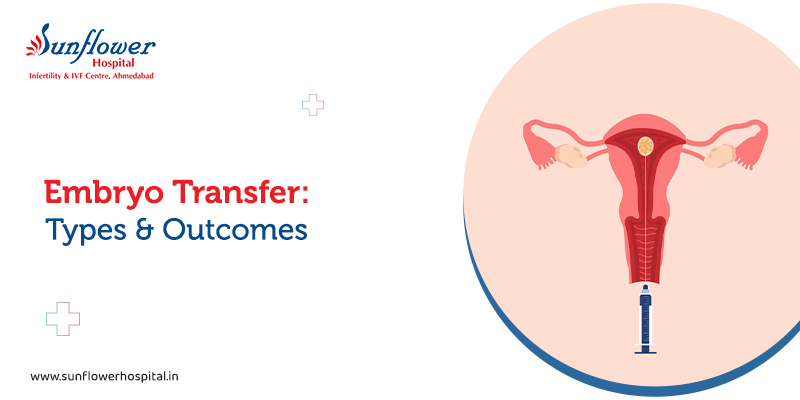The excitement and anxiety of becoming parents after trying for a long time can get the best of your emotions. As you embark on your IVF (In Vitro Fertilization) journey, you will undergo several steps or stages that will result in successful fertilization and, ultimately, conception. One crucial step in the entire process is embryo transfer. It plays a significant role in the procedure’s success.
Since there are different types of embryo transfer, understanding them is vital to make informed decisions. Thus, this blog.
Let us take you through this step of IVF treatment in India by starting things off with the basics.
Embryo Transfer: What is it?
In simple terms, embryo transfer is a procedure of placing the embryo into the mother’s womb. This procedure is done after the egg is successfully fertilized in the laboratory tray and involves precision.
ET (Embryo Transfer) is often a painless procedure performed using a catheter guided by a pelvic ultrasound. The procedure is done with the intent to help couples suffering from infertility issues conceive. Doctors generally perform this on people who struggle with the following:
- Endometriosis
- Fallopian tube blockage or damage
- Ovulation disorders
- Poor sperm motility or morphology
- Tubal ligation
- Uterine fibroids
Embryo Transfer: Types
IVF specialists at the best fertility hospital in India discuss several embryo transfer options available to finalize one that best suits your condition. The options are:
Fresh Embryo Transfer (ETs)
Post-egg retrieval and fertilization, specialists will choose the embryos with the highest chances of implantation. They will then place the embryo into the to-be mother’s uterus and wait for the results.
Frozen Embryo Transfer (FET)
This procedure involves using the frozen or stored embryos from the previous IVF cycles. FET allows embryo genetic testing before implantation and thus is one of the most common procedures performed in this category. Genetic testing significantly decreases the chances of miscarriage or genetic defect.
Doctors perform this procedure using a catheter. Since this is a simple procedure, your doctor may not recommend pain relievers; however, you can discuss partially medicated or medicated treatment options with them if they fit your preference.
Multiple vs Single Embryo Transfer
There is much speculation about whether placing multiple embryos increases the chances of conception. However, there is no specific number of embryos that are to be transferred. Instead, it varies from clinic to clinic.
Fertility specialists in Ahmedabad often place one embryo at a time in the uterus. Only in some cases will they transfer two embryos to increase the possibilities of successful conception. This is often done in women aged 35 or above. Overall, several factors, including age and reproductive history, affect the number of embryos that will be placed in the mother’s uterus.
Day 3 Embryo Transfer
Day 3, or cleavage embryo transfer, is named after the dividing or cleaving cells in the embryos. Since many embryos fail to survive until day five, many fertility specialists, depending on the patient’s overall condition, conduct the procedure on day three. This increases the chances of successful conception.
Day 5 Embryo Transfer
Day 5 embryo transfer is often referred to as a blastocyst. Embryos develop into a 60 - 120 cell sphere around a fluid-filled cavity by the fifth day. Many fertility specialists prefer blastocysts since the chances of the embryo being genetically normal are high. This ultimately increases the chances of successful conception.
A Note from Sunflower Infertility & IVF Center
Undergoing every stage of the IVF treatment can be overwhelming. However, at Sunflower Hospital, you will be under the care and supervision of the best IVF specialist in India. Our specialists will discuss all the information concerning pre-preparation and post-procedure to ensure that the procedure is efficiently completed and that the chances of a successful pregnancy are maximized.


Leave a Comment